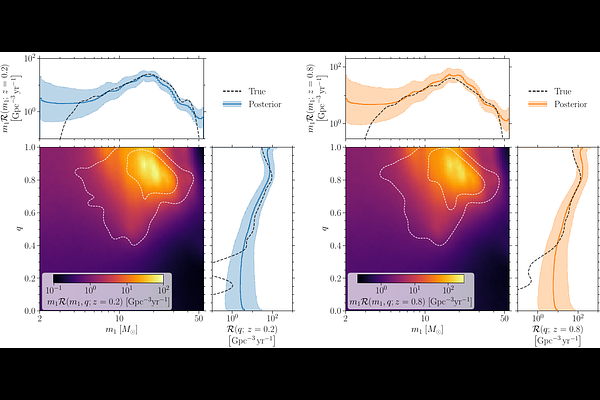Nowhere left to hide: revealing realistic gravitational-wave populations in high dimensions and high resolution with PixelPop

Nowhere left to hide: revealing realistic gravitational-wave populations in high dimensions and high resolution with PixelPop
Sofia Alvarez-Lopez, Jack Heinzel, Matthew Mould, Salvatore Vitale
AbstractThe origins of merging compact binaries observed by the LIGO-Virgo-KAGRA gravitational-wave detectors remain uncertain, with multiple astrophysical channels possibly contributing to the merger rate. Formation processes can imprint nontrivial correlations in the underlying distribution of source properties, but current understanding of the overall population relies heavily on simplified and uncorrelated parametric models. In this work, we use PixelPop-a high-resolution Bayesian nonparametric model with minimal assumptions-to analyze multidimensional correlations in the astrophysical distribution of masses, spins, and redshifts of black-hole mergers from mock gravitational-wave catalogs constructed using population-synthesis simulations. With full parameter estimation on 400 detections at current sensitivities, we show explicitly that neglecting population-level correlations biases inference. In contrast, modeling all significant correlations with PixelPop allows us to correctly measure the astrophysical merger rate across all source parameters. We then propose a nonparametric method to distinguish between different formation channels by comparing the PixelPop results back to astrophysical simulations. For our simulated catalog, we find that only formation channels with significantly different physical processes are distinguishable, whereas channels that share evolutionary stages are not. Given the substantial uncertainties in source formation, our results highlight the necessity of multidimensional astrophysics-agnostic models like PixelPop for robust interpretation of gravitational-wave catalogs.